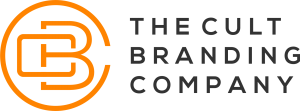Breaking down silos can spark innovation in unexpected ways.
Gillian Tett, The Silo Effect
You’ve seen it before: team members thinking about themselves more than the team; Every man and woman for themselves; a business composed of silos rather than being a cohesive organization.
Silos create inefficiency, waste time, prevent the business from achieving its vision, and hinder innovation.
So, how can you help create a cohesive team?
Here are three ways to break down silos and rally your team to success.
1. Create a Unified Vision.
Create a vision for your team that ties into the brand’s overall vision. Ask your team members to be involved in this process. Inspire them to take ownership of the business. Don’t make it complicated: create a vision that team members are passionate about and where everyone buys into its success.
An inspiring vision that everyone buys into will transition people from a “me” mentality to an “us” mentality.
2. Motivate and Incentivize.
Successful leaders identify what motivates each of their team members–it will be different for different people. Incentivize accordingly.
Motivation encompasses a wide variety of tactics including shared interests, individual investment in growth, shared voice, and positive words of encouragement. Incentives and praise should be designed to eliminate the “it’s not my job” attitude and encourage input, teamwork, and productivity.
3. Collaborate and Create Using the Six Thinking Hats Method.
The best method we’ve found for facilitating collaboration is Edward de Bono’s Six Thinking Hats. de Bono developed a simple and effective way to facilitate more collaboration and creativity during meetings by utilizing different perspectives.
Each hat represents a different perspective. Each team member wears each hat in turn. For example, “Okay, let’s put on our White Hats. Jim, you’re up first.”
Here’s a brief description of each hat:
White Hat: The neutral White Hat offers objective facts and figures and is used near the beginning of the meeting to establish relevant facts and information about the issue to be discussed.
Red Hat: The emotional and intuitive Red Hat is used to get people’s gut reactions to an idea or when you want the team to express their emotions freely.
Black Hat: The cautious Black Hat is used when you want to get the critical viewpoint of an idea or situation. The “devil’s advocate” hat helps decrease the chances of making a poor decision.
Yellow Hat: The sunny and positive Yellow Hat helps identify the value of ideas and plans. The Yellow Hat helps counterbalance the judgmental thinking of the Black Hat.
Green Hat: The creative Green Hat comes on when you want to generate fresh ideas and new directions. This is a very powerful hat that each player needs to wear.
Blue Hat: The organizing Blue Hat sets objectives, outlines the situation, and defines the problem at the beginning of the meeting and returns at the end to summarize and draw conclusions.
Remember, these six hats represent perspectives, not people or personalities. For this method to be used efficiently, each person in a meeting can and must be able to wear each hat in turn.
Breaking down silos is not an easy task for any organization but avoidance is detrimental.
A unified vision, the right motivation, and collaboration provides team members with a clear purpose and means of accomplishing the ultimate goal. There is nothing more powerful in any organization than having all employees pushing fiercely in the same direction.

